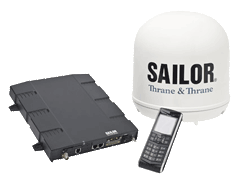
On 24th March 2015, Inmarsat will transition all BGAN (FleetBroadband, SwiftBroadband, and Land BGAN) and Classic Aero services from the current EMEA region satellite (I-4 F2) to the more powerful Alphasat satellite.
GSPS services were successfully transitioned to Alphasat in November 2013.
Do I need to take action?
The transition from I-4 F2 to Alphasat will require little/no action from most users, however see below for a number of specific points regarding the transition:
- No action is required for maritime terminals.
- All users with land terminals operating in EMEA should upgrade to the latest version of LaunchPad, which includes the Alphasat coverage map. Previous versions of LaunchPad are compatible with Alphasat but will display the I-4 F2 coverage for EMEA rather than the Alphasat coverage.
- All land terminals in India, Sri Lanka and Nepal, which currently access Inmarsat’s services via the I-4 F2 (EMEA region) satellite, including fixed antennas and M2M terminals, will need to repoint their antennas to the AsiaPac satellite prior to 24 March 2015.
- No action is required for BGAN terminals in India, Sri Lanka and Nepal that access Inmarsat’s services via the I4-APAC satellite.
- All land terminals in Brazil, which currently access Inmarsat’s services via the I-4 F2 (EMEA region) satellite, including fixed antennas and M2M terminals, will need to repoint their antennas to the Americas satellite prior to 24 March 2015.
- No action is required for BGAN terminals in Brazil which currently accesses Inmarsat’s services via the I4-AMER satellite.
- Users of aviation terminals should contact their Distribution Partner for details of any ORT and/or software changes that may be required. The transition of services from I-4 F2 to Alphasat has dual benefits. This both enhances the capacity of I-4 services in the EMEA region, while also providing an additional satellite through which Inmarsat can create a fourth region, serving the Middle East and Asia (MEAS). The new region will operate from 64 degrees east and is scheduled to commence before the end of 2015.



